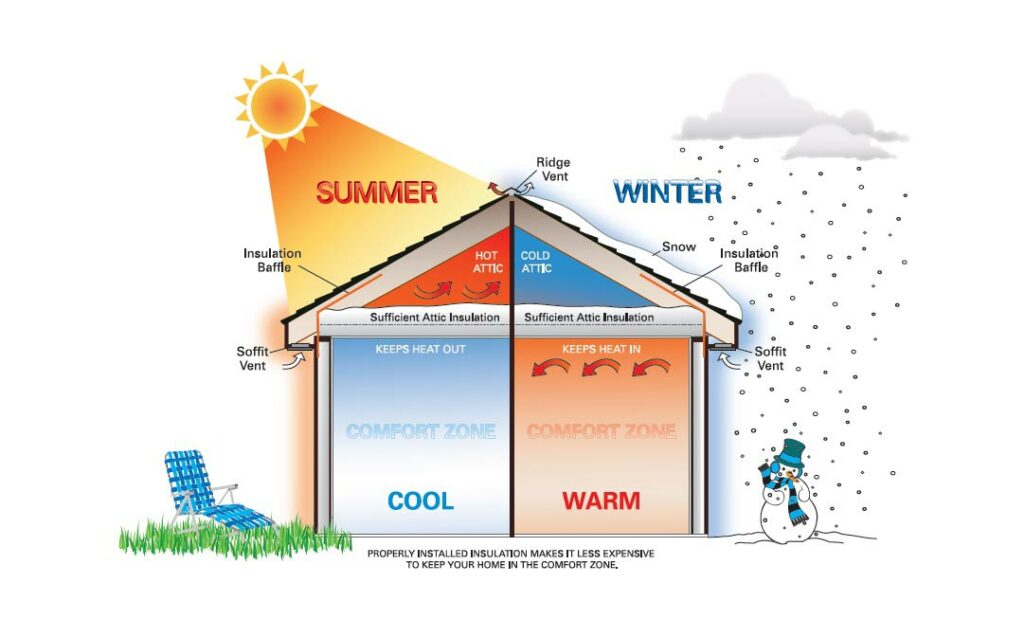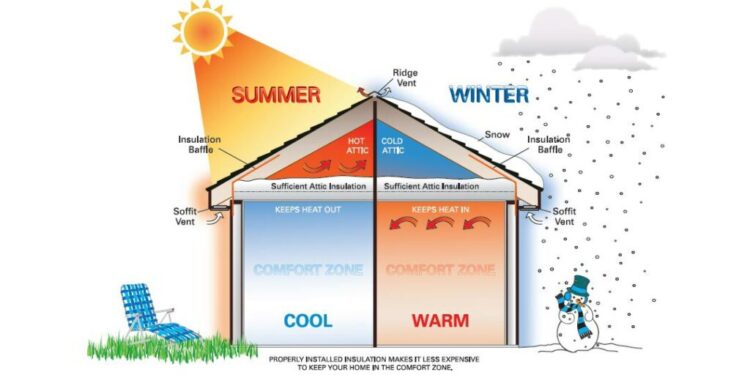Embark on a journey to enhance your home's AC efficiency with the ultimate guide on insulating your living space. From understanding the significance of proper insulation to exploring different materials, this topic covers essential aspects to keep your home cool and energy-efficient.

Delve into the details of insulation, air sealing techniques, and DIY projects that can transform your home into a haven of comfort and cost savings.
Understanding Insulation
Proper insulation plays a crucial role in maintaining a comfortable indoor temperature and reducing energy consumption. By preventing heat transfer, insulation helps keep the cool air in during hot seasons and the warm air in during cold seasons. This not only enhances the efficiency of your AC system but also saves you money on utility bills.
Key Areas for Insulation
- Attic: The attic is one of the key areas where heat can escape or enter your home. Insulating the attic can significantly improve AC efficiency.
- Walls: Insulating exterior walls can help maintain a consistent indoor temperature and reduce the workload on your AC unit.
- Floors: Insulating floors above unconditioned spaces like crawl spaces or basements can prevent heat loss and improve overall insulation.
Types of Insulation Materials
- Fiberglass:Fiberglass insulation is one of the most common types and is known for its affordability. It is available in batts or rolls and offers good thermal resistance.
- Foam:Foam insulation provides excellent insulation properties and can fill in gaps and cracks effectively. However, it tends to be more expensive than other materials.
- Cellulose:Made from recycled paper, cellulose insulation is eco-friendly and offers good resistance to airflow. It can be blown into walls or attics for optimal coverage.
Insulation Materials
Comparison of Insulation Materials
- Fiberglass:
- Pros: Affordable, easy to install, good thermal resistance.
- Cons: Can cause skin irritation, may require protective gear during installation.
- Foam:
- Pros: Excellent insulation properties, fills gaps effectively.
- Cons: More expensive, may release harmful chemicals during installation.
- Cellulose:
- Pros: Eco-friendly, good resistance to airflow.
- Cons: Requires professional installation for optimal results
.
Tips for Choosing Insulation Materials
- Consider the climate in your area to determine the most suitable insulation material.
- Consult with professionals to assess your home's insulation needs and recommend the best material.
- Compare costs and benefits of different insulation materials to make an informed decision.
Air Sealing
Role of Air Sealing
Proper air sealing complements insulation by preventing air leaks that can undermine the effectiveness of insulation. It helps maintain a consistent indoor temperature and reduces the workload on your AC system.
Identifying and Sealing Air Leaks
- Check for drafts around windows, doors, and electrical outlets to identify potential air leaks.
- Use weather stripping, caulking, or expanding foam to seal gaps and cracks where air may be escaping.
- Consider hiring a professional to conduct a thorough energy audit to pinpoint air leakage areas in your home.
DIY Insulation Projects
Insulating Attics, Walls, and Floors
- Attics:Start by measuring the area and choosing the appropriate insulation material. Wear protective gear and follow installation instructions carefully to insulate the attic effectively.
- Walls:Determine the type of wall insulation needed and use the proper tools to install insulation between wall studs. Ensure a snug fit to maximize efficiency.
- Floors:Insulate floors above crawl spaces or basements using insulation materials suitable for the space. Seal any gaps or cracks to prevent heat loss.
Safety Precautions and Cost-Effective Techniques
-
- Wear protective clothing, gloves, and a mask when handling insulation materials to avoid skin irritation or respiratory issues.
- Consider DIY-friendly insulation options like foam board or blown-in insulation to save on installation costs.
- Research online tutorials or consult with experts for guidance on cost-effective insulation techniques for your home.
Conclusion
In conclusion, optimizing your home's insulation for better AC efficiency is not just about staying cool—it's about maximizing energy savings and environmental sustainability. By implementing the tips and techniques discussed, you can create a space that is both comfortable and eco-friendly.
Essential FAQs
What are the key areas in a house that need insulation for AC efficiency?
The key areas include attics, walls, floors, and crawl spaces. Proper insulation in these areas helps maintain a consistent temperature and reduces energy waste.
How do I identify air leaks in my home?
Common signs of air leaks include drafts, uneven temperatures in different rooms, and high energy bills. You can also perform a simple DIY test using a candle or an incense stick to detect airflow.
What are the safety precautions when handling insulation materials?
Always wear protective gear such as gloves, masks, and goggles when working with insulation. Avoid direct skin contact and ensure proper ventilation in the area to prevent inhalation of fibers.
 Delve into the details of insulation, air sealing techniques, and DIY projects that can transform your home into a haven of comfort and cost savings.
Delve into the details of insulation, air sealing techniques, and DIY projects that can transform your home into a haven of comfort and cost savings.










